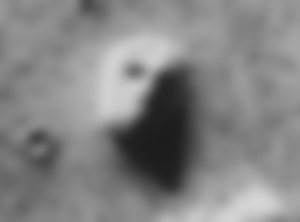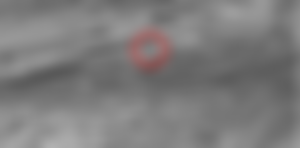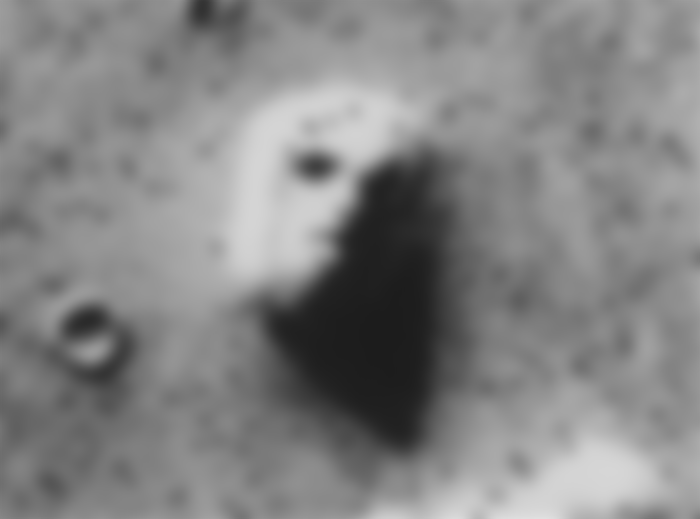Face on Mars: A History of Martian Illusions
You've probably all heard of the Martians, the inhabitants of Mars who are often referred to as "little green beings". People have been seeing strange things on the surface of Mars for centuries. From 1700 to the present day, anyone who has managed to provide even the slightest proof that life exists on Mars has become famous. The latest example reveals secret bases on Mars, populated either by humans or Martians, as seen in a photograph of the Red Planet's surface. of the surface formed by the spacecraft in orbit. But science always jumps in with evidence that these objects don't actually exist. In this vast and lonely universe, are Earthlings just desperate neighbors looking for someone to play with? Looking back at the long history of Mars illusions (and human delusions), it seems so.
In 1784, Sir William Herschel, a famous British astronomer, wrote that the dark areas on Mars were oceans and the lighter ones were land. He speculated that Mars was home to intelligent beings who "probably lived in conditions similar to ours." Herschel's theory resisted for centuries, on the other hand, some astronomers claimed that vegetation can also be seen in brighter areas. Fortunately for Herschel, his other contributions to astronomy - which earned him the honor of being the namesake of two powerful observatories - were large enough to relegate his theories about Mars to the bottom of his biography.
Channels
During Mars' approach to Earth in 1877, the Italian astronomer Giovanni Schiaparelli noticed grooves and channels on the surface of the Red Planet through his telescope. The Italian word he used, "canali," translates to "canals" in English, leading many in the English-speaking world to conclude that there was intelligent life on Mars that built a system of waterways. The theory was debunked in in the early twentieth century, when it was shown that the "channels" were only optical illusions: when viewed through a poor-quality telescope, details such as the hills and craters of Mars appeared to be joined in straight lines. Later, spectroscopic analysis of the light coming from Mars showed that there is no water on the surface.
ET radio
In 1921, Guglielmo Marconi, the inventor of the first radio telegraph system, claimed to hear signals that he thought might be Martian. Again, the next year, 1924, at a time when Mars was relatively close to Earth, the US government asked all radio stations to go silent, so they could hear any signals from Mars coming to Earth. But ET radio remained silent.
A face on Mars

It all started back in 1976, when NASA released an image of an interesting mountain on Mars taken by the Viking 1 spacecraft, along with text describing the formation as having eyes and nostrils. More than thirty years later, "Face on Mars" continues to inspire myths and conspiracy theories, and many people believe that the man-made structure was built by an ancient Martian civilization.
From a bird's eye view, the shadows on the mountain really make it look like a face. From other angles, however, in photos taken by the Mars Express Orbiter and other spacecraft, the mountain doesn't look like a face at all.
A person on Mars

A photograph taken by the Mars rover Spirit 2007 appears to show a human being wearing a robe and kneeling in prayer. It is, of course, a rock, formed into a human shape in our brains, due to pareidolia, "Pareidolia" is the scientific term for seeing faces (or other significant objects) where there are none. It happens, scientists say, as a byproduct of our increased sensitivity to the details of the human face. Takeo Watanabe from Boston University's Visual Sciences Laboratory presents it this way: "We have memorized too many human faces, so we see them even where they are not there."
Bio Station Alpha
These days, another alleged piece of evidence appeared, which at first glance opened up the theory that there is life on Mars. In a YouTube video clip, the self-proclaimed “armchair astronaut” claims to have identified a human (or alien) base on Mars, which he calls Bio Station Alpha. He discovered a somewhat mysterious linear structure appearing on the surface of the Red Planet in Google Mars, a program created from satellite images of the planet. Astronomers immediately recognized the structure, in reality just a white, pixelated strip, created by cosmic rays hitting the sensor of the camera that took the photo. Cosmic rays are energetic particles emitted by the sun. They build up an electrical charge in the camera's pixels and break them, creating white lines on any image taken at the time.When the raw photo is converted to JPEG for use in the Google Mars program, McEwen believes the compression, likely caused by cosmic rays, becomes more square and similar to the "Bio Station" shape. This was later proven, when the original source of the photos used by Google was identified. The original photo contains an obvious cosmic ray artifact,

